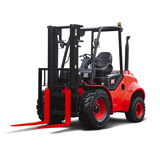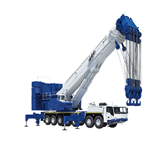From fires to earthquakes you have a responsibility to your staff (and their families) to make their workplace as safe as humanly possible. And when it stops being safe you have the same responsibility to ensure those first crucial moments aren't chaotic moments.
Evacuation procedures are and always will be an integral part of your business culture. Here is a general guide to get your emergency evacuation procedures proceeding.
Emergency? What emergency?
All kinds of emergency and you should have effective plans covering every eventuality. Fire is one of the most frequent offenders, so start there.
Then formulate proper plans for any other possibilities – bomb threat, explosion, chemical leak, bushfire (different to an internally sourced fire), armed confrontation and, of course, natural disasters such as earthquakes, cyclones and floods.
And it's not just your building you should consider. Who are your immediate neighbours? What threat does their operation provide?
Simple plans are good plans
Your evacuation procedures need to be easily understood by all workers from top to bottom, so keep them simple. The same basic principles apply whether you are a one room operation or a six block factory, so the first thing you need to do is assign responsibilities.
Choose dependable people to be your emergency evacuation wardens. Their role is to marshal everyone out of the building in a calm, orderly fashion, ensure no one lingers or uses lifts, and then do a roll call once outside. Your more senior wardens will also be responsible for power shutdowns if any are required.
Who do you call?
Ensure all relevant emergency contacts – police, fire brigade, ambulance, SES – are prominently displayed throughout your building and updated regularly.
Your staff roster must ensure that a warden is always on duty in every major division of your building. The warden on duty at the source of the emergency should be the one to make the initial call to emergency services and sound the alarm.
Illustrate the assembly points
Create a site map showing all emergency exits and assembly points and post it in key locations around your premises. Then set monthly evacuation training sessions where wardens bring all staff in their area together to run over procedures and familiarise themselves with the site plan. Make this training an integral part of all new staff inductions.
Be a drill sergeant
You can't practice evacuation drills too often. Well, you can – every day is too often. But every fortnight isn't a bad idea. Yes, most of your workers will find it ill-timed and annoying, and the rest will love it as an unscheduled ciggie break, but the best evacuation procedures are ones your staff can do in their sleep. So bore them stupid with it and make no apologies.
The day they thank you for it won't be a great day either, but it will be a better day than it might have been if you're all there to talk about it.
Customise your crises
An internal fire calls for a standard evacuation of the building to designated assembly areas a safe distance away – car parks or across the road. A chemical leak calls for far more intricate evacuation and emergency treatment procedures both inside and outside. An externally activated emergency such as a flood or bushfire calls for a completely different set of procedures where evacuation may be a last, rather than a first resort.
This article would be an eBook if it attempted to detail the procedures for all. It can, therefore, merely remind you of the unfortunate possibilities that can befall any business having a particularly bad day. Hopefully these general guidelines inspire you to reassess your own procedures and create an even safer environment for all.
Find safety equipment suppliers and solutions
Safety training and courses
Safety consultants and certifiers








-160x160-state_article-rel-cat.png)

-160x160-state_article-rel-cat.png)



-160x160-state_article-rel-cat.png)






